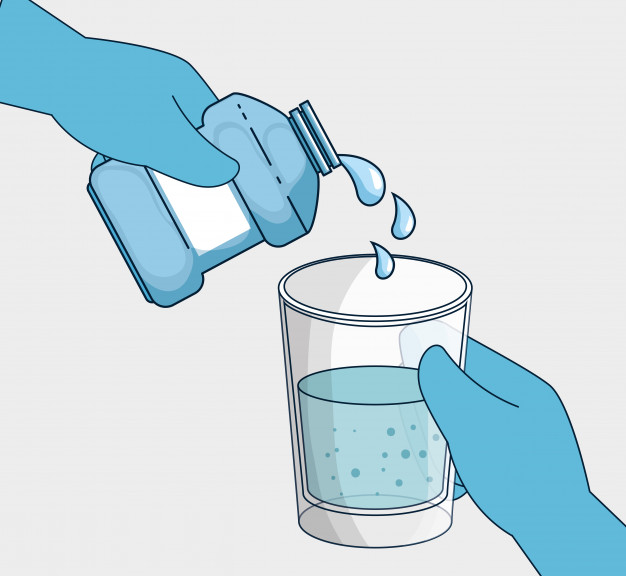Good news coming from UConn Health where research has proven that a simple method of rinsing with a diluted version of over-the-counter Povidone-Iodine (PVP-I) oral rinse can inactivate viruses like the coronavirus and prevent transmission in as little as 15 seconds.
Gargling mouthwash could be a way to inactivate the virus in the throat, which could help to prevent coughing and sneezing. Anyone coming too close to another person, may benefit from this method. This research was published in the American College of Prosthodontics Journal of Prosthodontics.
While PVP-I solutions are generally sold over the counter at 10% concentration, the researchers tested three different diluted concentrations at 1.5%, 1%, and .5% at three different contact times of 15 seconds, 30 seconds, and 45 seconds. The researchers found that the lowest concentration of .5% and the lowest contact period of 15 seconds was enough to completely inactivate SARS CoV-2 in the laboratory. At Altura Periodontics, in the event a patient has an allergy to iodine, hydrogen peroxide is used instead.
The COVID-19 pandemic created a significant threat to the safety of dental professionals who operate in the oral and nasal cavities. Dr. Avinash Bidra, clinical associate professor of prosthodontics at the School of Dental Medicine, and Dr. Belachew Tessema, associate professor in the division of otolaryngology at the UConn School of Medicine and ENT physician at ProHealth Physicians, and their team across the nation wanted to investigate a way to decontaminate the patient’s oral and nasal cavities to protect and prevent transmission.

“We were not satisfied with the safety provided by the mouth masks and face shields,” says Bidra. “Almost all procedures involve aerosol production, resulting in a higher risk for clinicians, assistants, and patients.”
Bidra and Tessema recommend using 9.5ml of water and 0.5ml of a commercially available 10% povidine-iodine antiseptic solution to create a 0.5% diluted solution. The dilution should be done immediately before rinsing and the rinsing should be for a minimum of 30 seconds. The only contraindication is for anyone is allergic to iodine, pregnancy or having thyroid problems.
“This is a simple and inexpensive method to protect oneself when coming in close contact with people,” says Bidra. “We believe this has immediate and tremendous dental public health impact for patients and for dental professionals, amidst the ongoing pandemic.”
Tessema and the otolaryngology department at UConn have extensively researched the safety of PVP-I in the oral and nasal cavity, and are looking forward to the added protection it will offer for clinicians in addition to the typical personal protective equipment (PPE).
“The safety of povidone-iodine in the sinonasal and oral cavity has been well documented and we have shown that the SARS CoV-2 virus can be rapidly inactivated by a topical application,” says Tessema. “Studies have shown that the nasal and oropharyngeal cells are reservoirs for SARS-CoV2 infection. We believe that nasal and oral decontamination with PVP-I may play an adjunctive role in mitigating viral transmission beyond PPE.”
The researchers are optimistic that this method can benefit those engaged in high risk activities outside of a dental or otolaryngologic setting. Basically, anyone coming too close to another person, may benefit from this simple method.

